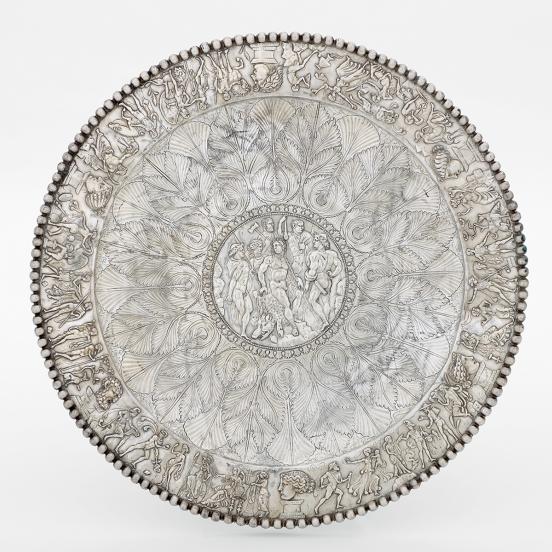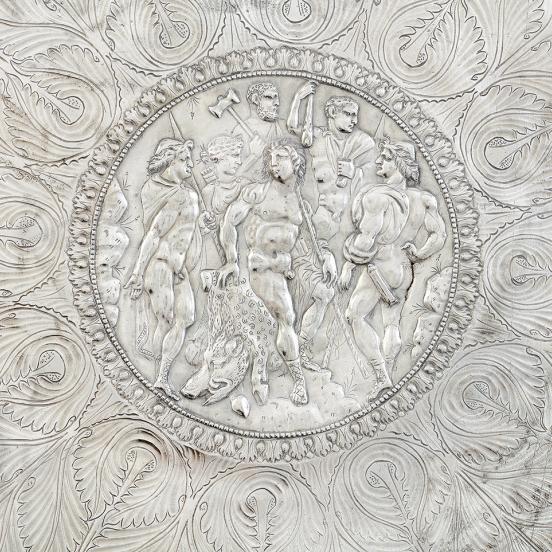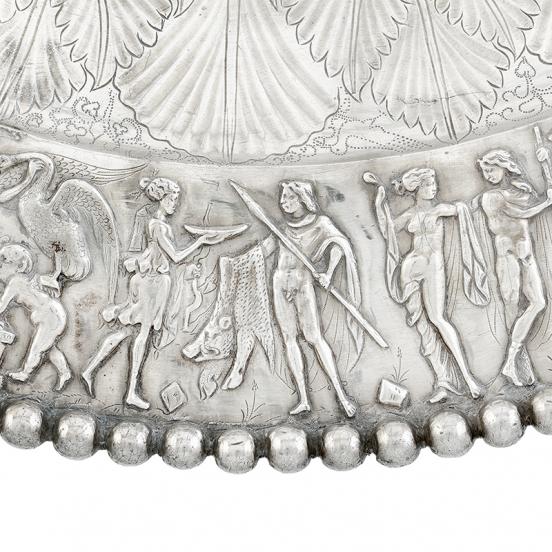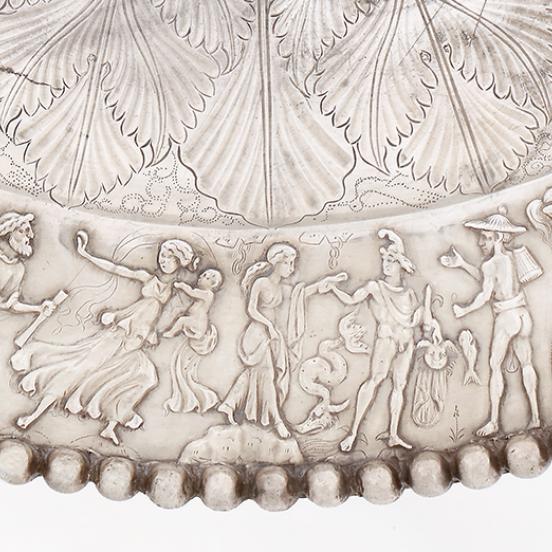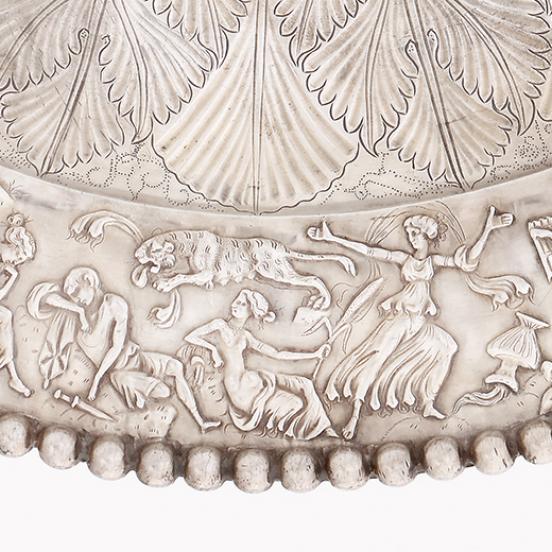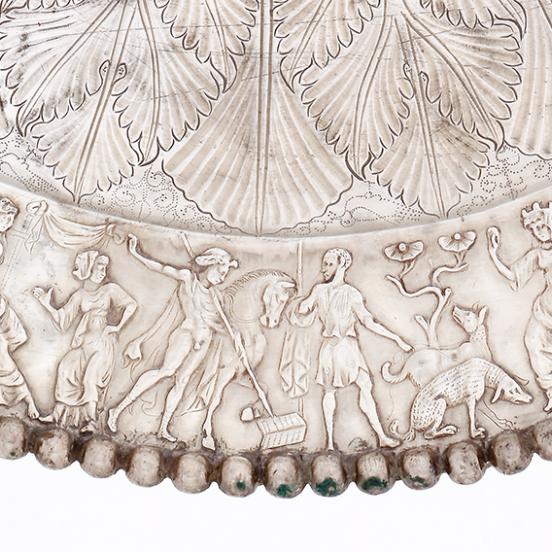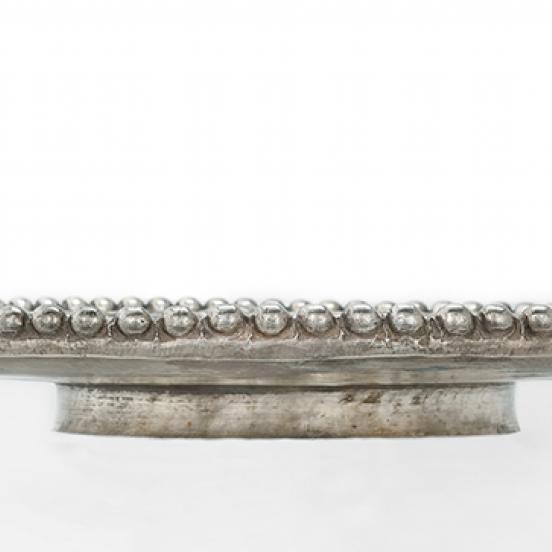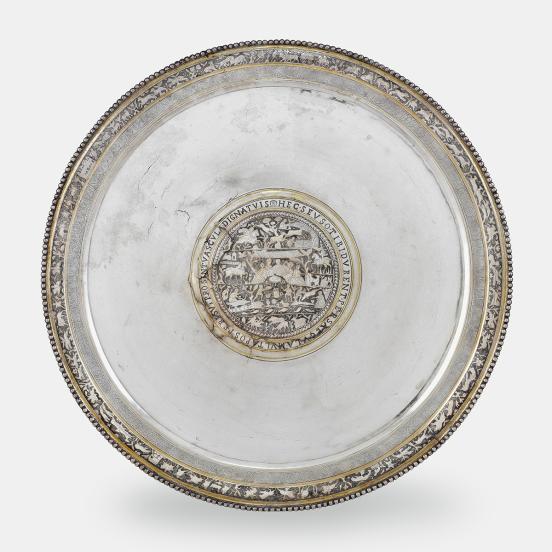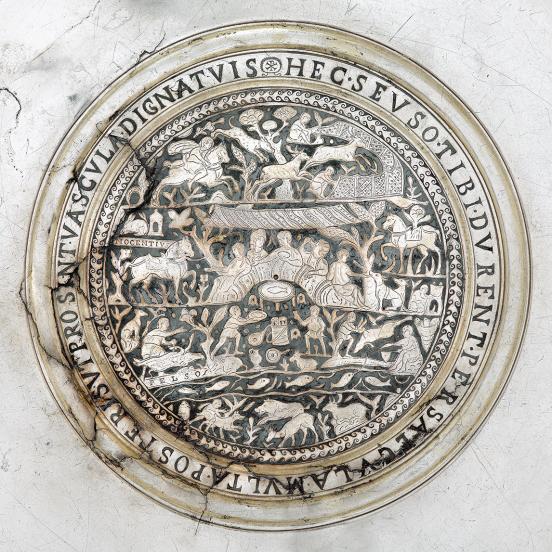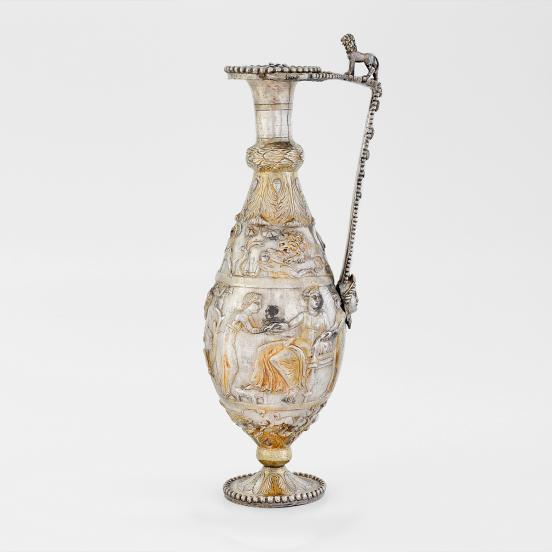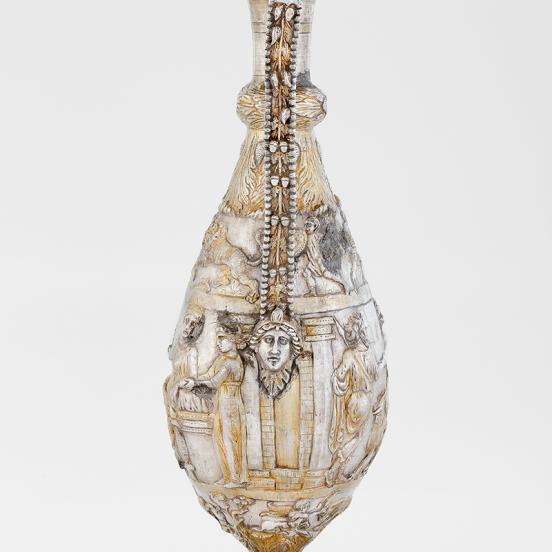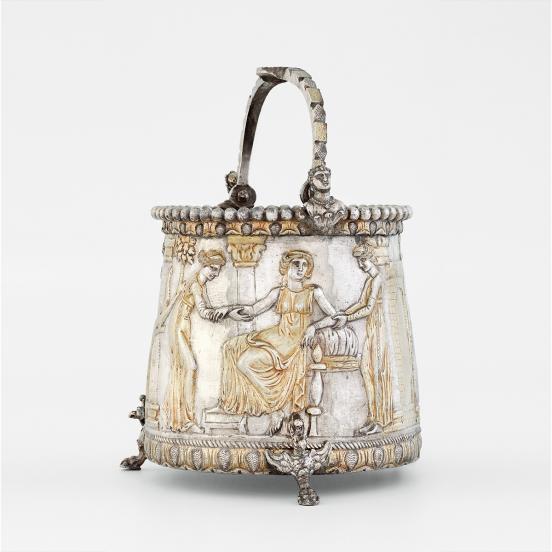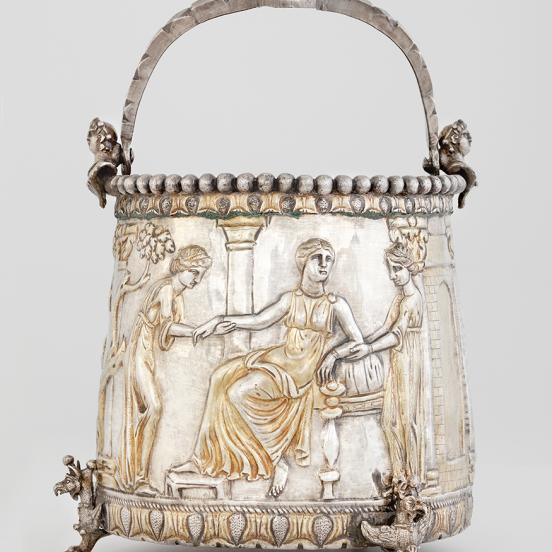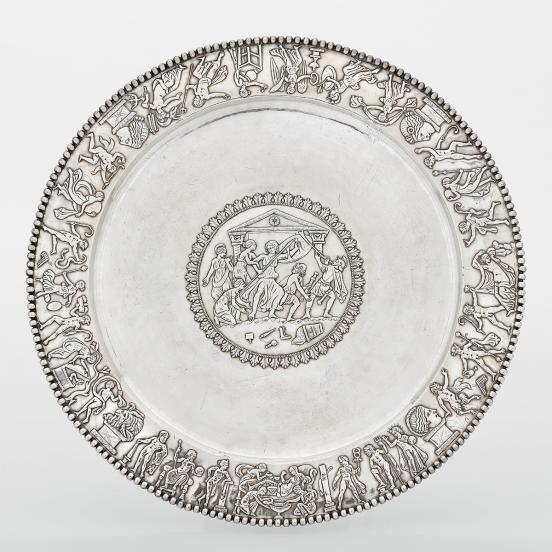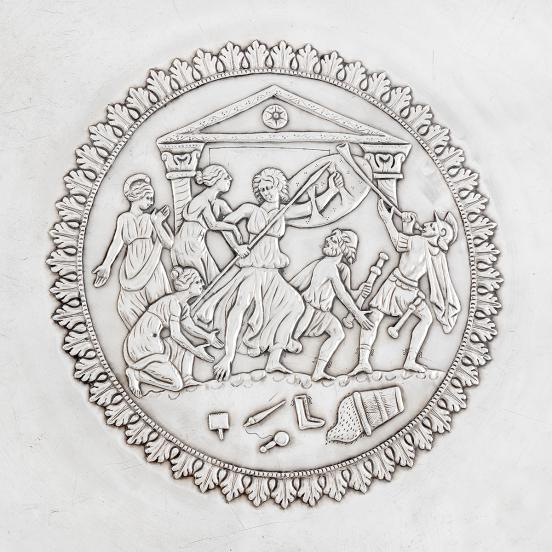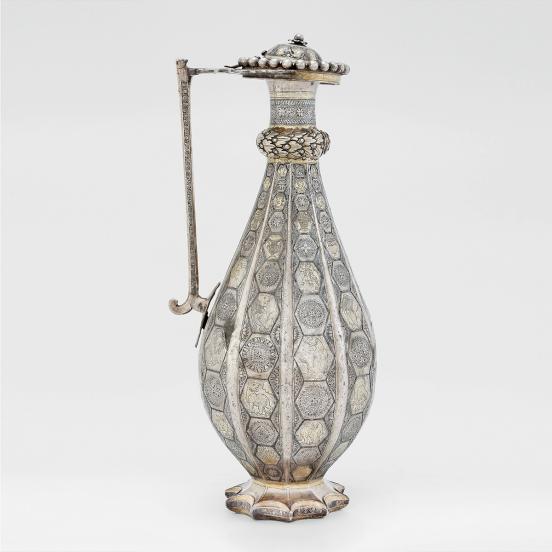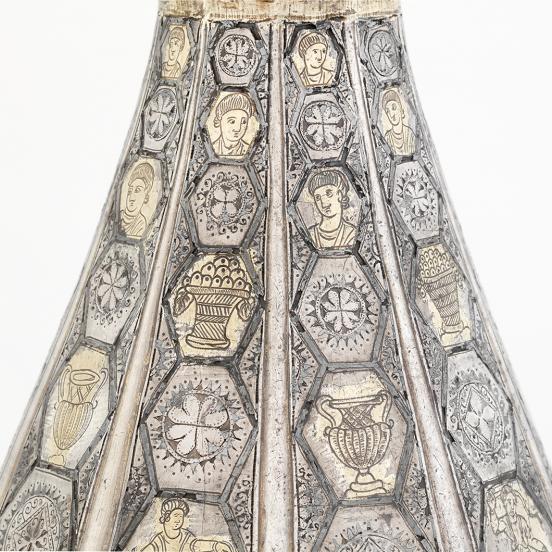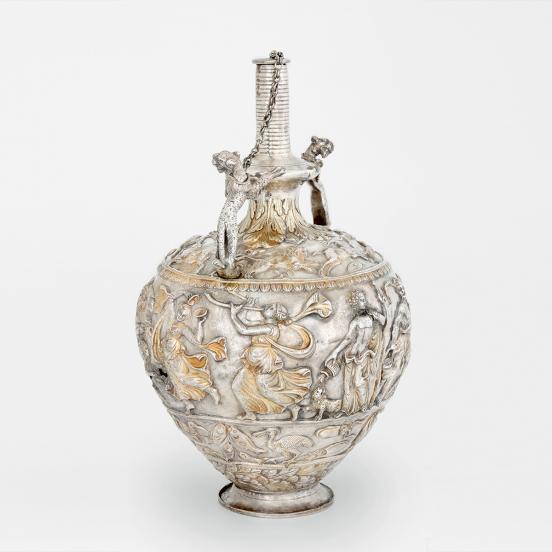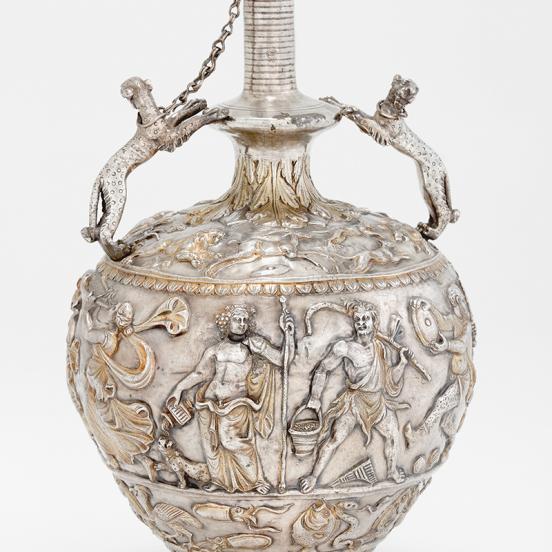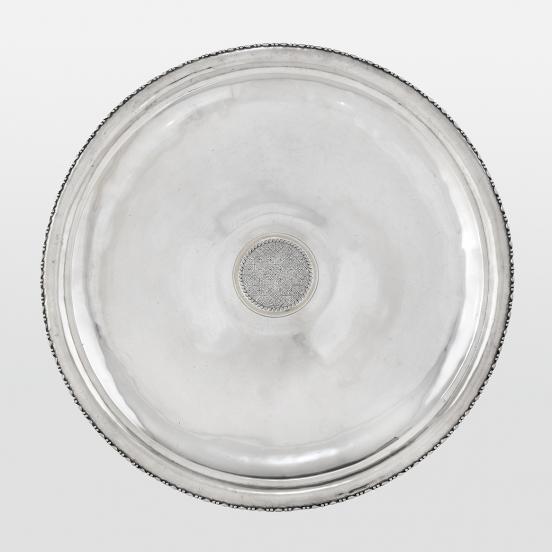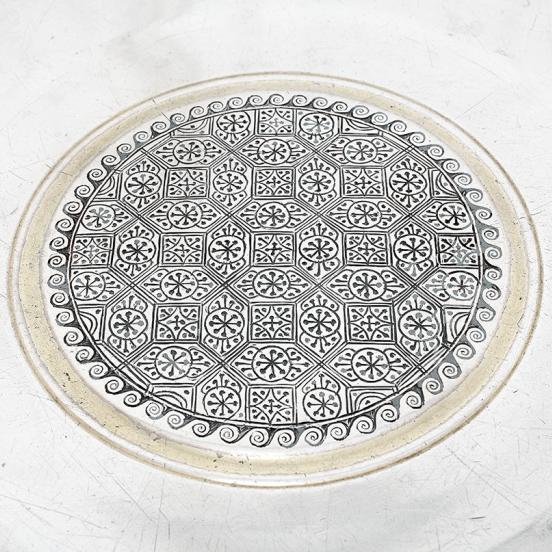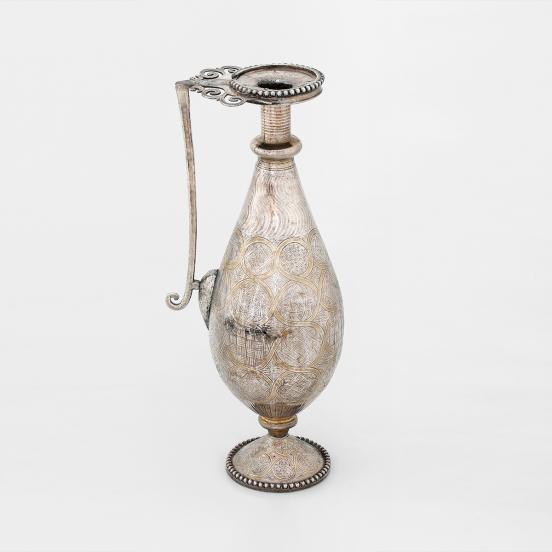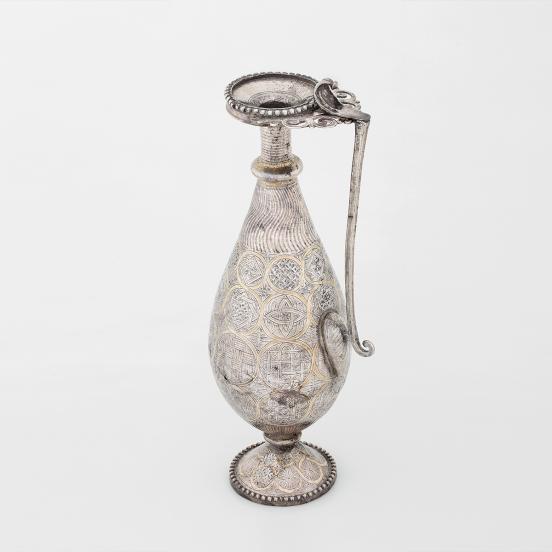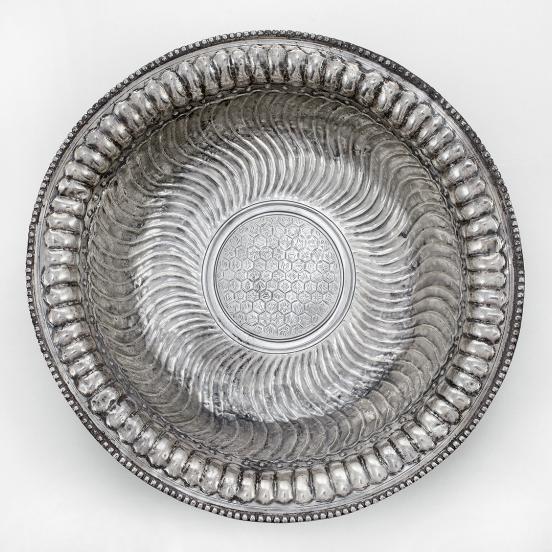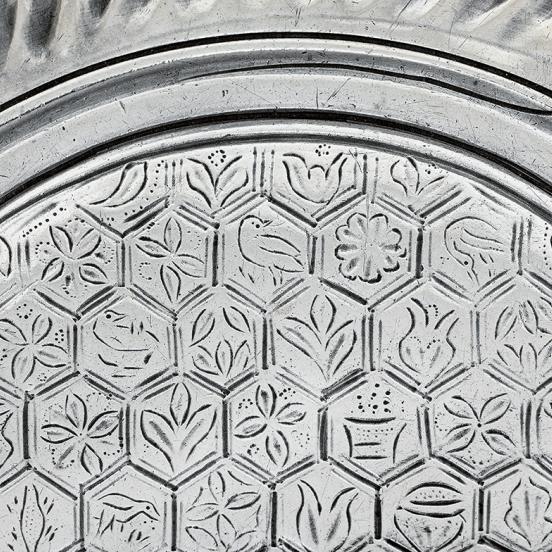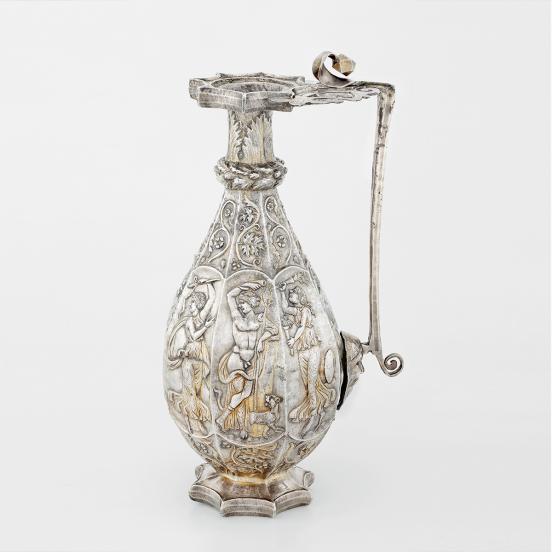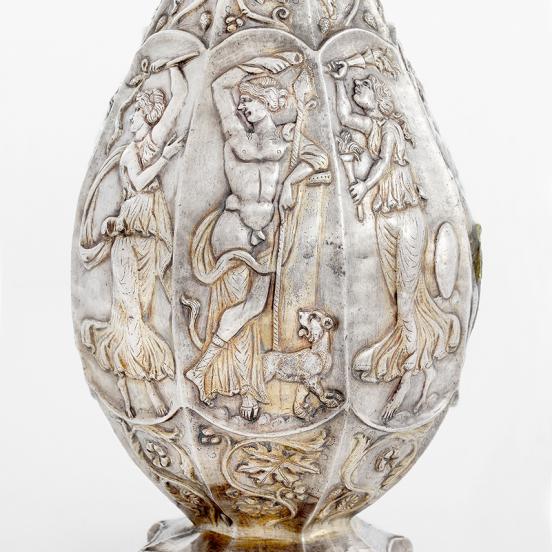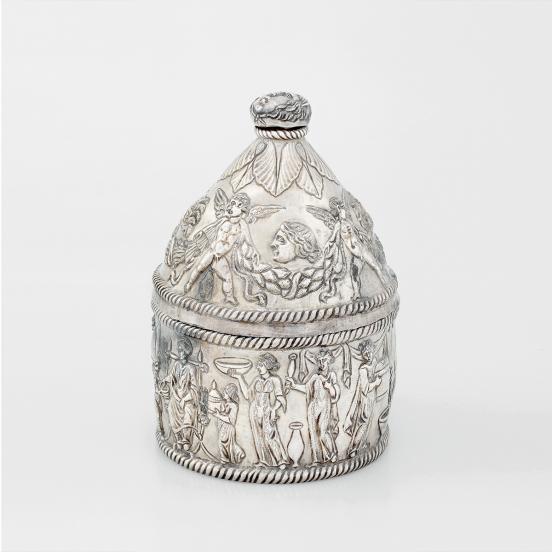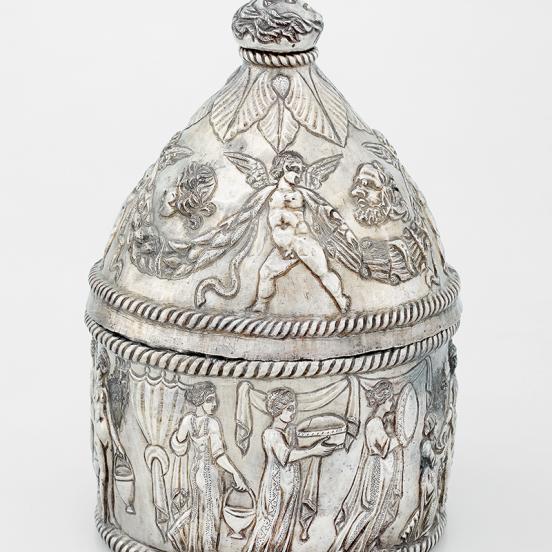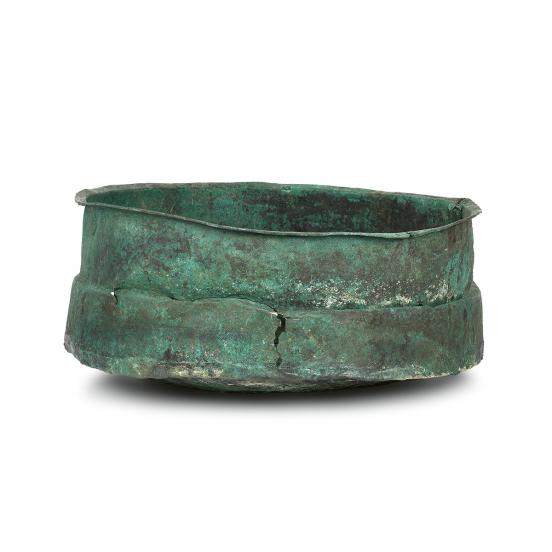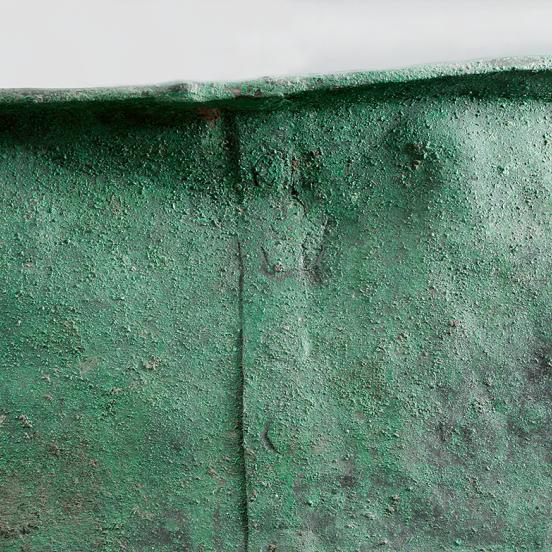The Meleager Platter
The medallion of the Meleager platter bears a relief representation of the heroes of the famous ancient Greek hunting story, the Calydonian boar hunt. The platter was named after Meleager who killed the ravaging wild boar. The silversmith depicted him during his rest in the centre of the platter, together with the trophy. Behind him stands Atalanta, who was the first to wound the boar and who was, in the end, presented with the trophy by Meleager. This caused a disagreement among the hunters and finally led to the hero’s death. They are surrounded by other participants in the hunt, including the Dioscuri. The scene of presenting the trophy can be seen on the rim of the platter in the direction of Meleager’s glance.
All around on the rim of the platter other Greek mythological scenes can be discovered. The story of Paris judging the golden apple for Aphrodite, the most beautiful among the goddesses, as well as famous love stories are represented: Perseus with the severed Gorgon’s head in his hand rescuing Andromeda, who was chained to a rock; Phaedra who fell in love with her stepson, Hippolytus; the lovers Pyramus and Thisbe, forbidden from seeing one another, whose secret tryst ended tragically.
The platter which was used for display and probably also as a serving dish, was made from a thick cast silver plate with a string of beads on the rim. The relief scenes were shaped on the obverse of the platter, similarly to the Achilles platter. The broad part between the centre and the rim of the platter is covered with engraved acanthus leaves.
The Greek inscription from punched dots inside the foot-ring on the reverse refers to its weight. It was probably added in the silversmith’s workshop. However, it is difficult to read due to the worn surface and thus its precise interpretation is open to question.

